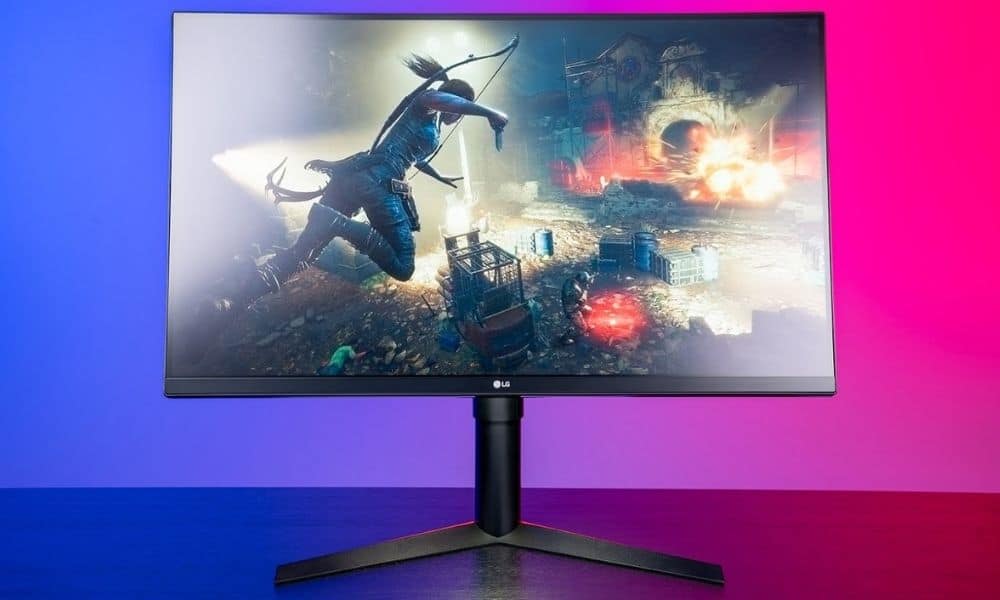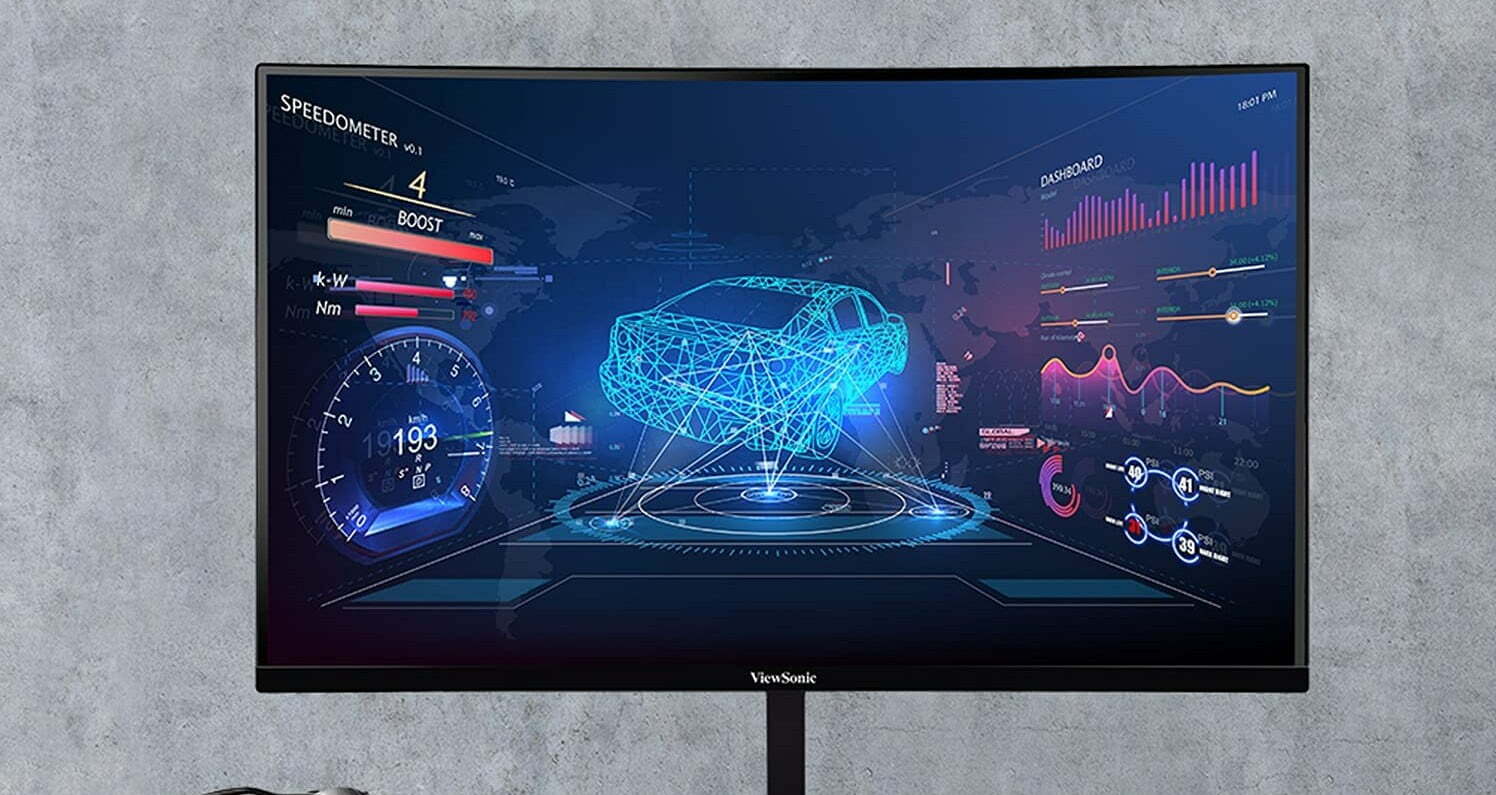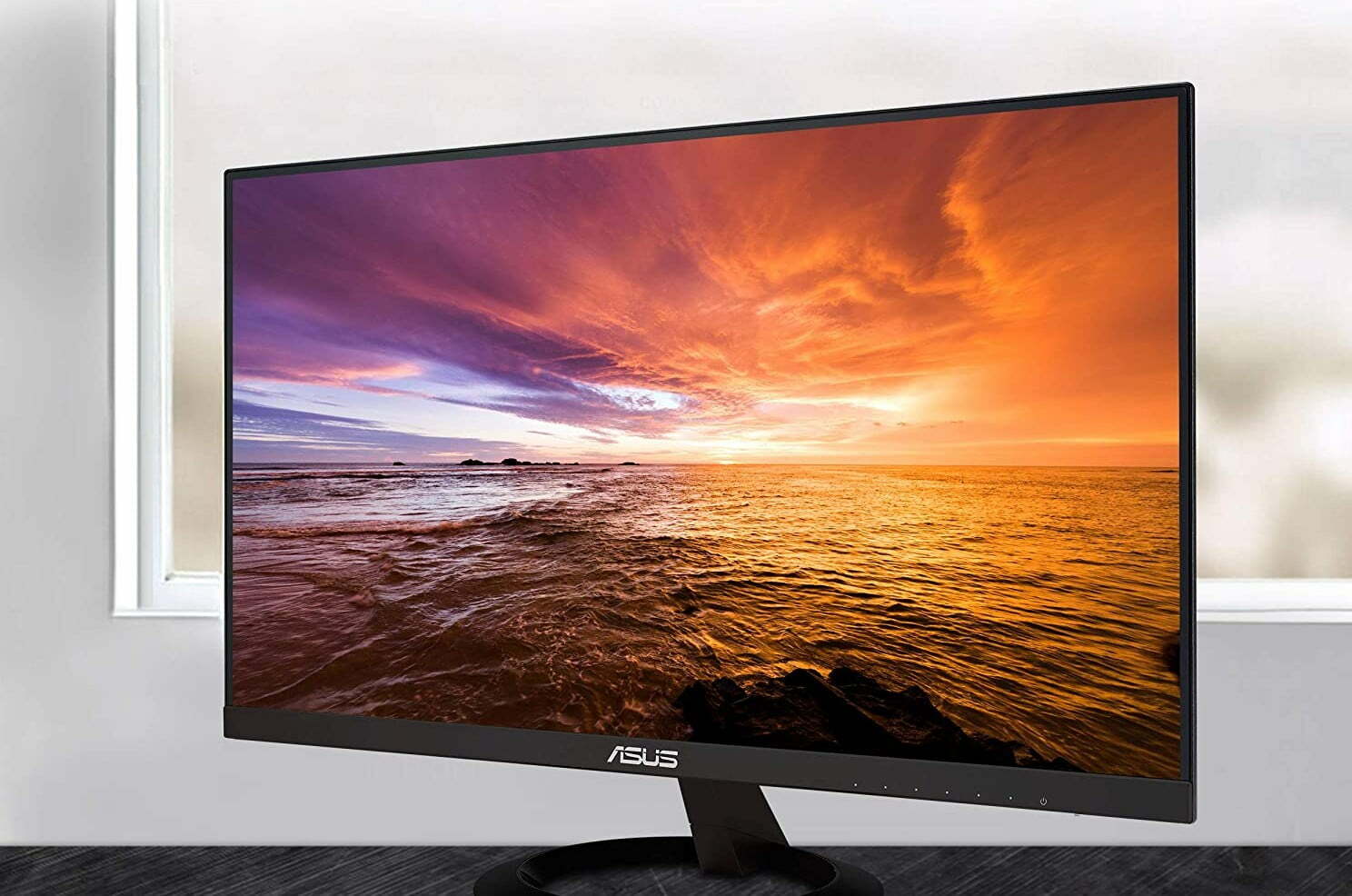Key Takeaways:
- A monitor’s aspect ratio refers to how wide the picture is in relation to the overall height.
- The most commonly used aspect ratio in modern displays is 16:9.
- Some consumers have begun to adopt ultrawide monitors, which feature a 21:9 aspect ratio.
Finding the right computer monitor for your needs can be slightly difficult, as consumers must take the size and overall resolution into consideration. Another thing to keep in mind is the play’s aspect ratio.
Additionally, you’ll also want to know what is a computer monitor’s pixel density. The more pixels there are, the richer the picture quality. Learn more with our resource articles, and some go into other specs you can learn about, such as monitor contrast ratio.
Definition of Aspect Ratio on Computer Monitors
Aspect ratio is a term that originates from the cinema. It was coined to indicate how wide the picture was in relation to the overall height. Movies were originally in 4:3 aspect ratio and this ratio carried over into televisions and early computer monitors. This ratio eventually came to be known as 16:9 and is still commonly used in a wide variety of computing displays.
Related Posts:
Learn About Screen Sizing
Though a 16:9 aspect ratio is relatively common, modern displays have grown to accept a wide number of different ratios, each with its own advantages and disadvantages.
16:9 Aspect Ratio
As previously stated, many standard computer monitors arrive with a 16:9 aspect ratio. As such, it has become the standard aspect ratio for high-definition displays. The first HD televisions, with pixel counts of 720p or 1080p, all adopted a 16:9 aspect ratio and computer monitors followed suit. Monitors with a 16:9 aspect ratio are excellent for simple computing tasks, including accessing search engines, playing simple web-based games, and sending emails. This size is also good for streaming video content that was not filmed with a wide screen in mind.
Tip: Monitors with a 16:9 aspect ratio are excellent for simple computing tasks, including accessing search engines, playing simple web-based games, and sending emails
Warning: This size is also good for streaming video content that was not filmed with a widescreen in mind
16:10 Aspect Ratio
The modern standard 16:9 aspect ratio has only been common since 2010. Before that, many computer monitors adopted a 16:10 aspect ratio. Throughout the early days of computing, from the 1980s until the 2000s, 16:10 was the go-to aspect ratio for computer displays. The 16:10 aspect ratio is a direct outgrowth of the original 4:3 aspect ratio. The 16:10 aspect ratio has fallen out of favor and it is nearly impossible to find modern monitors with this ratio.
Tip: Throughout the early days of computing, from the 1980s until the 2000s, 16:10 was the go-to aspect ratio for computer displays
Warning: The 16:10 aspect ratio has fallen out of favor and it is nearly impossible to find modern monitors with this ratio
21:9 Aspect Ratio
The 21:9 aspect ratio is a relatively new one and was initially adopted so televisions and monitors could mimic the movie theater experience, allowing users to replicate movie-watching in a widescreen format. If you are purchasing an ultra-widescreen HD monitor, it is extremely likely it will arrive in a 21:9 aspect ratio. This ratio is also great for modern video games.
STAT:
4K is undergoing a much faster adoption rate than that of 1440p, with a 50%+ US market share expected by the end of the decade.
If much of this seems like Greek to you, there’s a good chance you’re unsure what type of monitor will work for you. Visit our resource article to learn about what is a computer monitor as a starting point.
Sources:
https://en.wikipedia.org/wiki/Computer_monitor
https://en.wikipedia.org/wiki/Computer_display_standard
https://en.wikipedia.org/wiki/Aspect_ratio_(image)
*https://www.youtube.com/watch?v=E-dUveGINTg
https://picture.iczhiku.com/resource/paper/sykSkLkiziTTdMbm.pdf




































![Best 27 Inch Computer Monitor in [year] 27 Best 27 Inch Computer Monitor in 2026](https://www.gadgetreview.dev/wp-content/uploads/how-to-buy-the-best-computer-monitor.jpg)
![Best BenQ Monitors in [year] 28 Best BenQ Monitors in 2026](https://www.gadgetreview.dev/wp-content/uploads/best-benq-monitor-image.jpg)
![Best ASUS Monitors in [year] 29 Best ASUS Monitors in 2026](https://www.gadgetreview.dev/wp-content/uploads/best-asus-monitor-image.jpg)
![Best Dell Monitors in [year] 30 Best Dell Monitors in 2026](https://www.gadgetreview.dev/wp-content/uploads/best-dell-monitor-image.jpg)
![Best HP Monitors in [year] 31 Best HP Monitors in 2026](https://www.gadgetreview.dev/wp-content/uploads/best-hp-monitor-image.jpg)
![Best Lenovo Monitors in [year] 32 Best Lenovo Monitors in 2026](https://www.gadgetreview.dev/wp-content/uploads/best-lenovo-monitor-image.jpg)
![Best ViewSonic Monitors in [year] 33 Best ViewSonic Monitors in 2026](https://www.gadgetreview.dev/wp-content/uploads/best-viewsonic-monitor-image.jpg)
![Best Gigabyte Monitors in [year] 34 Best Gigabyte Monitors in 2026](https://www.gadgetreview.dev/wp-content/uploads/best-gigabyte-monitor-image.jpg)
![Best Monitors for PS4 Pro Gaming in [year] 35 Best Monitors for PS4 Pro Gaming in 2026](https://www.gadgetreview.dev/wp-content/uploads/best-monitors-for-ps4-pro-image.jpg)
![Best Monitor for Xbox Series X in [year] 36 Best Monitor for Xbox Series X in 2026](https://www.gadgetreview.dev/wp-content/uploads/best-monitor-for-xbox-series-x-image.jpg)
![Best Acer Monitors in [year] 37 Best Acer Monitors in 2026](https://www.gadgetreview.dev/wp-content/uploads/best-acer-monitor-image.jpg)
![Best MSI Monitors in [year] 38 Best MSI Monitors in 2026](https://www.gadgetreview.dev/wp-content/uploads/best-msi-monitor-image.jpg)
![Best SAMSUNG Monitors in [year] 39 Best SAMSUNG Monitors in 2026](https://www.gadgetreview.dev/wp-content/uploads/best-samsung-monitor-image.jpg)
![Best LG Monitors in [year] 40 Best LG Monitors in 2026](https://www.gadgetreview.dev/wp-content/uploads/best-lg-monitor-image.jpg)
![Best AOC Monitors in [year] 41 Best AOC Monitors in 2026](https://www.gadgetreview.dev/wp-content/uploads/best-aoc-monitor-image.jpg)
![Best Philips Monitors in [year] 42 Best Philips Monitors in 2026](https://www.gadgetreview.dev/wp-content/uploads/best-philips-monitors-image.jpg)
![Best Monitors For PUBG in [year] 43 Best Monitors For PUBG in 2026](https://www.gadgetreview.dev/wp-content/uploads/best-monitor-for-pubg-image.jpg)
![Best Stream Decks in [year] 44 Best Stream Decks in 2026](https://www.gadgetreview.dev/wp-content/uploads/best-stream-deck-image.jpg)
![Best Monitors for Streaming in [year] 45 Best Monitors for Streaming in 2026](https://www.gadgetreview.dev/wp-content/uploads/best-monitor-for-streaming-image.jpg)
![Best Monitors For Flight Simulator in [year] 46 Best Monitors For Flight Simulator in 2026](https://www.gadgetreview.dev/wp-content/uploads/best-monitor-for-flight-simulator-image.jpg)




















